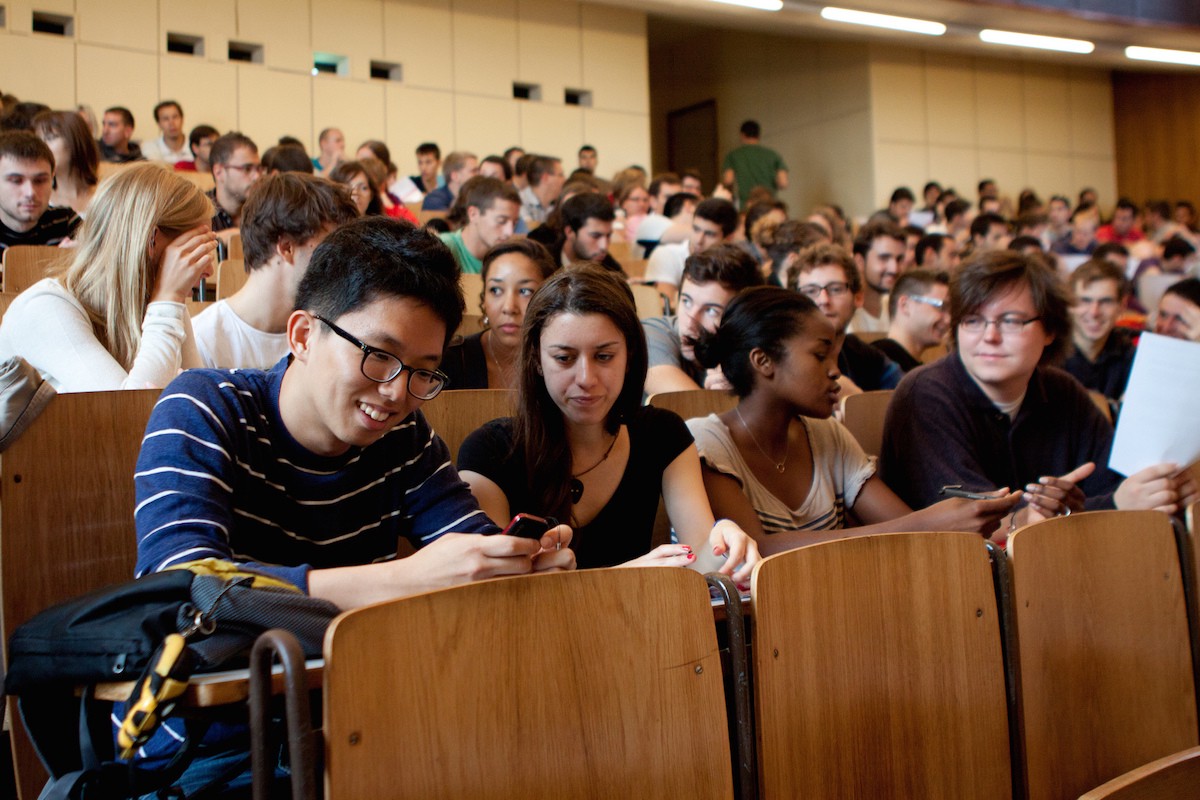Is College Too Expensive? Yes, But Especially for Those Attending Non-Elite Schools

It’s the time of year when students are heading off to college all across the country, and we start seeing the perennial “Is College Too Expensive?” articles popping up everywhere.
This one, from Planet Money co-founder and New York Times Magazine columnist Adam Davidson is worth reading. He begins by explaining how median household incomes have dropped over the course of the past 40 years, while housing and higher education costs have increased significantly:
Tuition at a private university is now roughly three times as expensive as it was in 1974, costing an average of $31,000 a year; public tuition, at $9,000, has risen by nearly four times. This is a painful bill for all but the very richest. For the average American household that doesn’t receive a lot of financial aid, higher education is simply out of reach.
Davidson then goes on to break the higher education industry into three markets: 1) the highly selective, elite college market, 2) the mid-tier regional powerhouses “with names that often begin with ‘University of,’” and 3) the nonselective public, community and private for-profit colleges.
Students who attend highly selective schools are often better off because grants, alumni gifts, and huge endowments can offset their education costs.
The systemic problems in the third market of nonselective colleges have been widely documented: for-profit schools are toxic money pits that have had a major impact on the student debt crisis, and the graduation rates at community colleges have been dismal.
And here’s Davidson explaining the problems at mid-tier public colleges:
Their tuition increases are being driven largely by state governments’ unwillingness or inability to raise per-student financing. Sandy Baum, a senior fellow at the Urban Institute, says that in the 2001–2002 school year, public schools received from 44 percent to 62 percent of their funding from state governments. Only a decade later, those levels had decreased to 27 percent to 51 percent. On average, states have lowered their per-student funding by 25 percent over the last 15 years. Some — Louisiana, Wisconsin, Kansas and Arizona — have cut their support sharply in the past few years. The money allocated for public education is a tempting target for governors facing shortfalls. Education is one of the largest items in a state budget, and educators don’t have the same lobbying power as more concentrated business groups. Republican governors with national political aspirations have found that “taking on” public education can enhance their popularity among primary voters.
In addition, Davidson writes that these cuts have also resulted in high-achieving students from educated families receiving a “disproportionate share of financial assistance” — a tactic mid-tier colleges use to lure them away from attending elite schools — which leaves lots of struggling students fighting over a smaller share of financial aid.
Is college too expensive? It very much seems to be, but it’s much more so for those trying to get a degree at mid-tier and nonselective schools.
Photo: Tirka Matousek
Support The Billfold
The Billfold continues to exist thanks to support from our readers. Help us continue to do our work by making a monthly pledge on Patreon or a one-time-only contribution through PayPal.
Comments